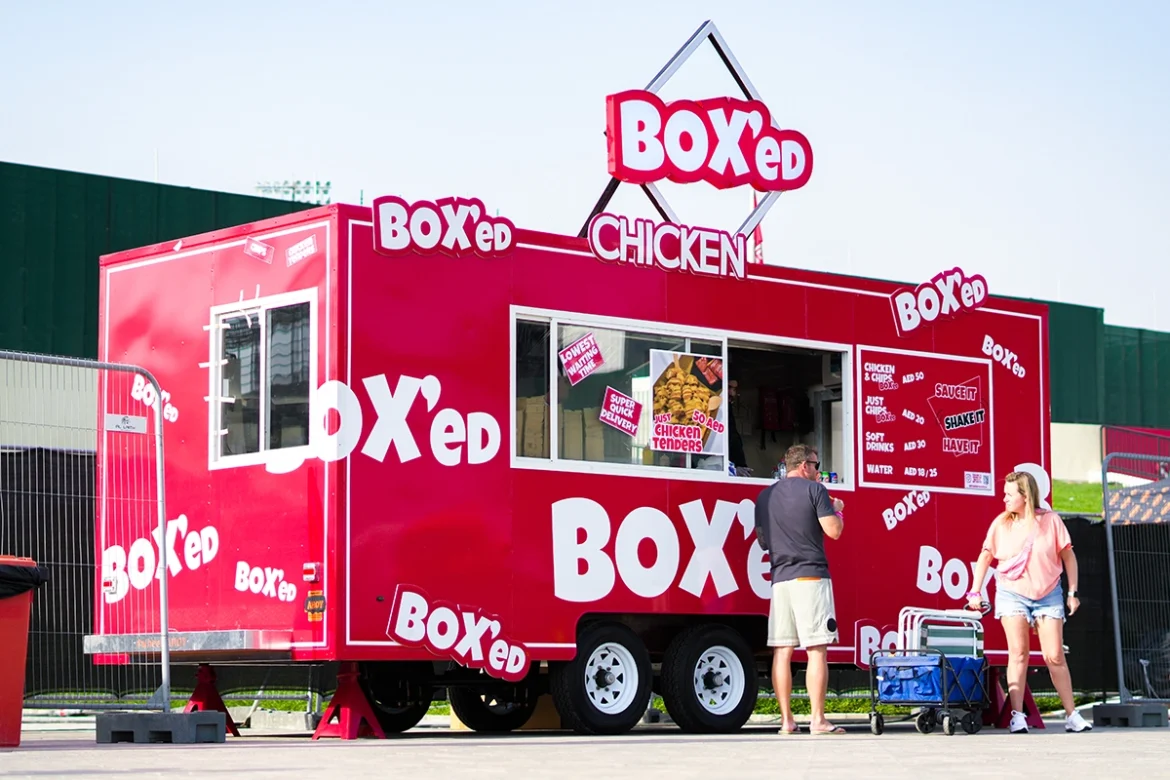Written by Sasi Ramachandran
The food and beverage industry is undergoing a significant transformation, driven by the rise of mobile hospitality. From food trucks and pop-up bars to immersive culinary experiences, mobile hospitality is redefining how consumers interact with their favorite brands.
With flexibility, cost-effective operations, and innovative dining experiences, this trend is capturing the attention of both entrepreneurs and established businesses alike.
Today’s consumers crave convenience, novelty, and experience-driven dining.
Mobile hospitality in the limelight
Recent data reveals that over 40% of food truck customers are under 45, a demographic that prioritizes ease of access and unique offerings. The growing fascination with gourmet street food and experimental cuisines has propelled mobile hospitality into the limelight, making it a lucrative avenue for both emerging and established brands.
Unlike traditional restaurants, mobile units provide adaptability — the ability to test multiple locations before committing to a permanent space. With lower overhead costs and the flexibility to pivot based on customer preferences, food trucks, mobile bars, and pop-up kitchens are proving to be more than just a trend; they are an integral part of the future of dining.
Leading brands like Costa, Salt, Pret A Manger, and Pizza Express have also explored food truck formats, crafting unique mobile experiences to connect with their audiences.
Impact on traditional restaurants?
Does the rise of mobile hospitality mean the decline of traditional restaurants? Not quite. Instead, the industry is witnessing a harmonious evolution, where both models coexist and cater to different consumer segments.
One of the biggest advantages of mobile hospitality is its ability to meet customers where they are. Whether at music festivals, corporate events, shopping districts, or beachfront venues, mobile units capitalize on high-footfall areas, ensuring maximum exposure.
Some even operate as semi-stationary setups in malls and food hubs, offering a balance between mobility and stability. Meanwhile, traditional restaurants still offer consistency, ambiance, and an established brand identity.
Instead of viewing mobile hospitality as competition, many established businesses are leveraging it as an extension of their brand, creating temporary activations that enhance customer engagement and build loyalty.
Adapting to consumer preferences
A key factor in mobile hospitality’s success is its ability to quickly adapt to consumer preferences. Unlike traditional venues, which often have rigid menus and operational structures, food truck operators and pop-up chefs can experiment with seasonal ingredients, global flavors, and hyperlocal offerings.
This agility allows brands to remain relevant and responsive to market trends, ensuring a continuous stream of customer engagement.
For startups and homegrown brands, mobile hospitality serves as an entry point into the market. With lower investment costs compared to brick-and-mortar restaurants, it provides an attractive opportunity for entrepreneurs to test new concepts without the financial risk of long-term leases, extensive staffing, or high operational expenses. This lean model allows businesses to reinvest in quality ingredients, marketing efforts, and immersive customer experiences.
Hybrid approach
With mobile activations gaining momentum, many businesses are exploring a hybrid approach —integrating both brick-and-mortar and mobile operations.
This strategy combines the stability of a physical venue with the agility and reach of mobile units, creating a dynamic customer experience that bridges both worlds. Brands are increasingly utilizing modular activations — temporary yet immersive setups that introduce customers to their ethos in an experiential way. From luxury brands hosting pop-up champagne bars to renowned restaurants launching limited-time food trucks, this fusion of mobility and permanence is setting the stage for a new era in hospitality.
Innovative brand experiences
Behind every successful food truck lies a story of ambition, resilience, and creativity.
At wheelsAHOY, this spirit drives innovation, shaping groundbreaking projects like the Costa Coffee multi-container drive-through and KFC’s state-of-the-art 40 ft container drive-through, both crafted by AHOYmodz, a sister company of wheelsAHOY.
These projects go beyond convenience—they showcase the evolving potential of food trucks in redefining consumer experiences and revolutionizing the way brands connect with their audiences.
At its core, mobile hospitality isn’t just about serving food, it’s about crafting experiences. Whether it’s a themed coffee truck in a bustling business district or a pop-up cocktail lounge at an exclusive event, the focus is on creating memorable interactions that resonate with consumers beyond the plate.
While traditional venues remain foundational to the F&B industry, mobile hospitality is carving its own niche — one that is dynamic, experiential, and deeply connected to modern consumer behavior.
The question isn’t whether one will replace the other but how businesses can leverage both to build stronger, more engaging brands. So, will mobile hospitality outperform traditional venues? Not necessarily — but it doesn’t have to. Its real strength lies in complementing, enhancing, and redefining how we experience food and beverage services in an increasingly mobile world.
Sasi Ramachandran is Senior Project Engineer at wheelsAHOY.


